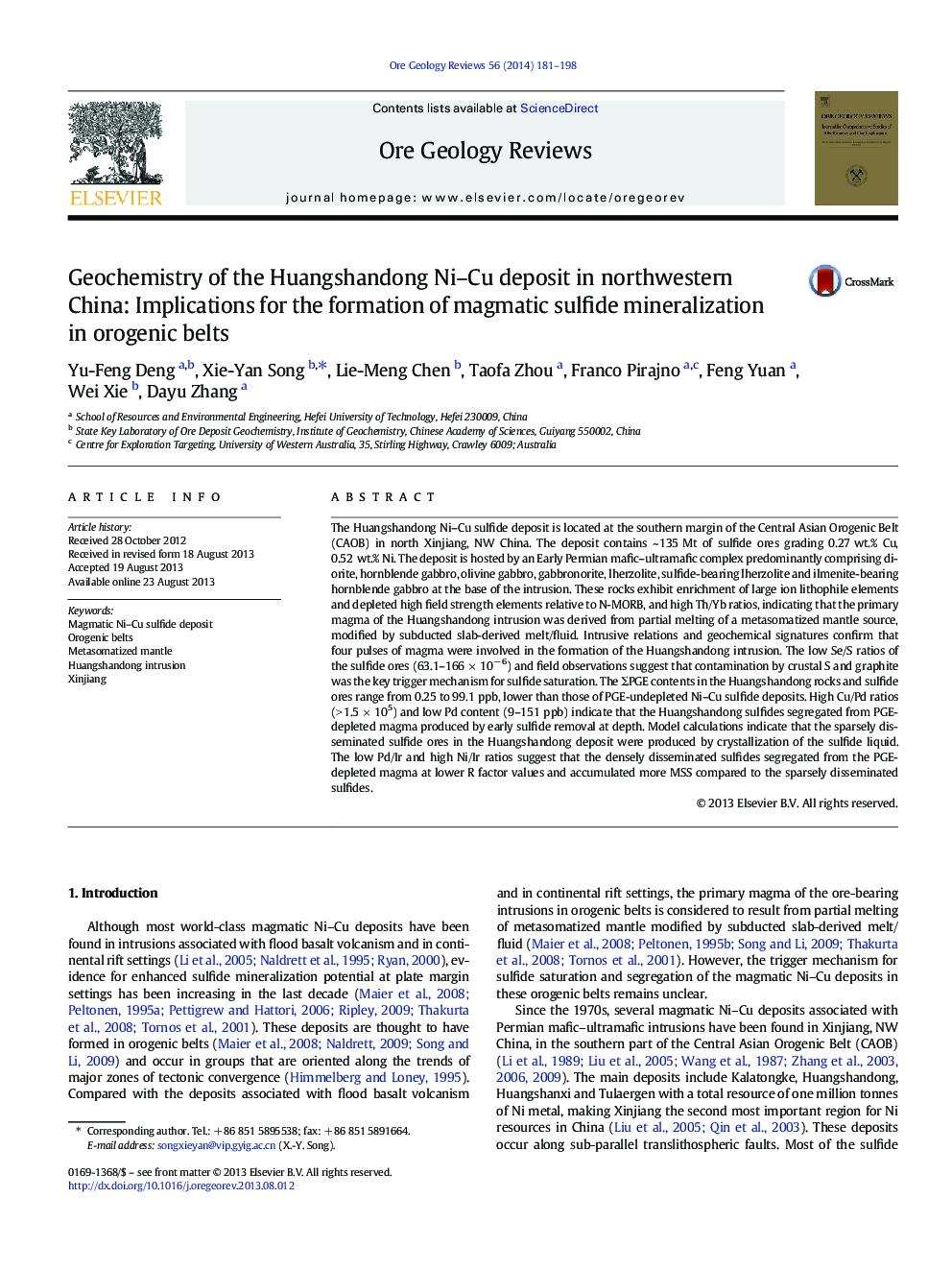| کد مقاله | کد نشریه | سال انتشار | مقاله انگلیسی | نسخه تمام متن |
|---|---|---|---|---|
| 4697428 | 1637247 | 2014 | 18 صفحه PDF | دانلود رایگان |

• The primary magma of the Huangshandong intrusion was derived from partial melting of a metasomatized mantle.
• Four pulses of magma were involved in the formation of the Huangshandong intrusion.
• Contamination of crustal S and graphite was the key trigger mechanism for sulfide saturation.
• The sulfides segregated from PGE-depleted magma produced by early sulphide removal at depth.
The Huangshandong Ni–Cu sulfide deposit is located at the southern margin of the Central Asian Orogenic Belt (CAOB) in north Xinjiang, NW China. The deposit contains ~ 135 Mt of sulfide ores grading 0.27 wt.% Cu, 0.52 wt.% Ni. The deposit is hosted by an Early Permian mafic–ultramafic complex predominantly comprising diorite, hornblende gabbro, olivine gabbro, gabbronorite, lherzolite, sulfide-bearing lherzolite and ilmenite-bearing hornblende gabbro at the base of the intrusion. These rocks exhibit enrichment of large ion lithophile elements and depleted high field strength elements relative to N-MORB, and high Th/Yb ratios, indicating that the primary magma of the Huangshandong intrusion was derived from partial melting of a metasomatized mantle source, modified by subducted slab-derived melt/fluid. Intrusive relations and geochemical signatures confirm that four pulses of magma were involved in the formation of the Huangshandong intrusion. The low Se/S ratios of the sulfide ores (63.1–166 × 10− 6) and field observations suggest that contamination by crustal S and graphite was the key trigger mechanism for sulfide saturation. The ΣPGE contents in the Huangshandong rocks and sulfide ores range from 0.25 to 99.1 ppb, lower than those of PGE-undepleted Ni–Cu sulfide deposits. High Cu/Pd ratios (> 1.5 × 105) and low Pd content (9–151 ppb) indicate that the Huangshandong sulfides segregated from PGE-depleted magma produced by early sulfide removal at depth. Model calculations indicate that the sparsely disseminated sulfide ores in the Huangshandong deposit were produced by crystallization of the sulfide liquid. The low Pd/Ir and high Ni/Ir ratios suggest that the densely disseminated sulfides segregated from the PGE-depleted magma at lower R factor values and accumulated more MSS compared to the sparsely disseminated sulfides.
Journal: Ore Geology Reviews - Volume 56, January 2014, Pages 181–198